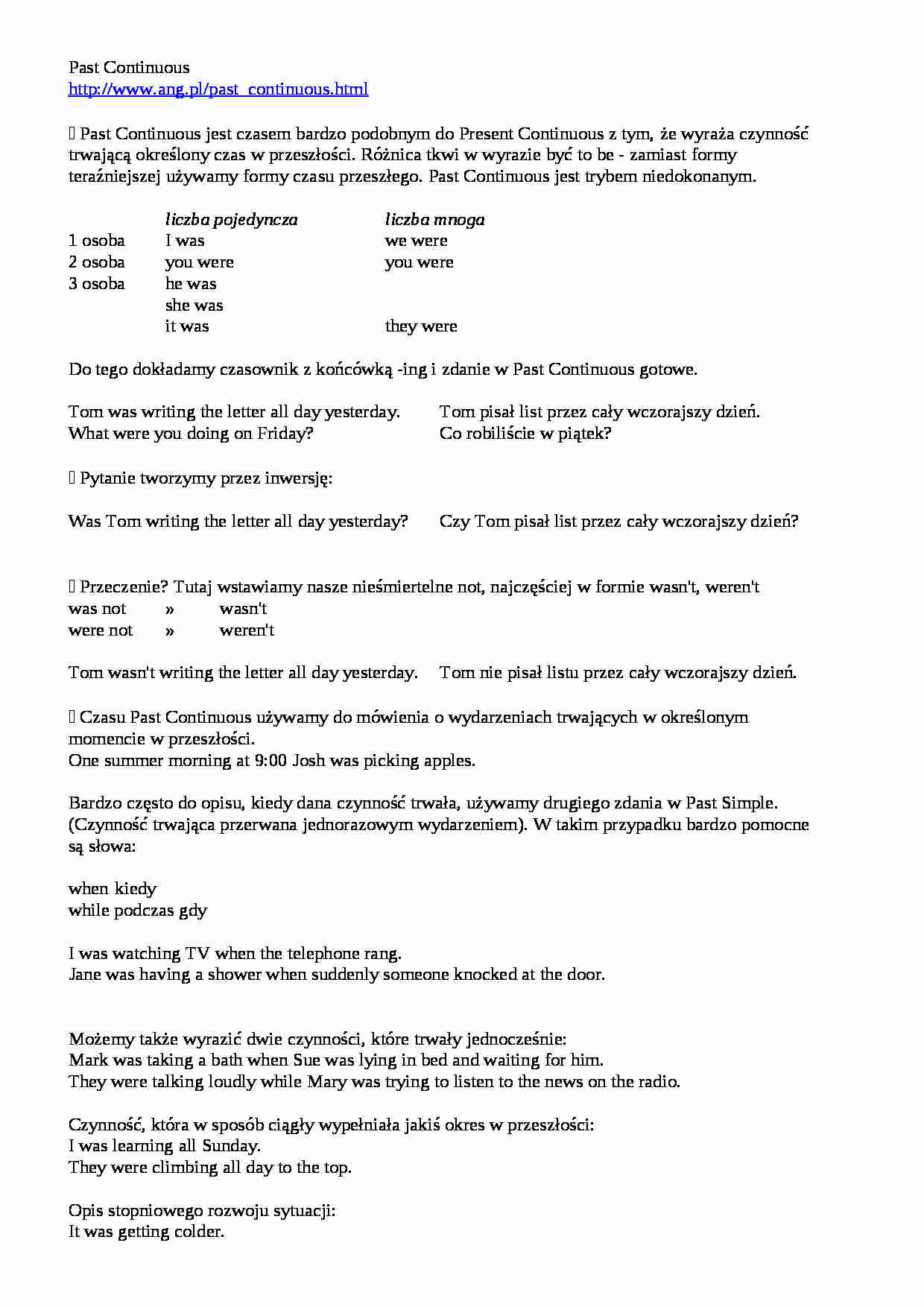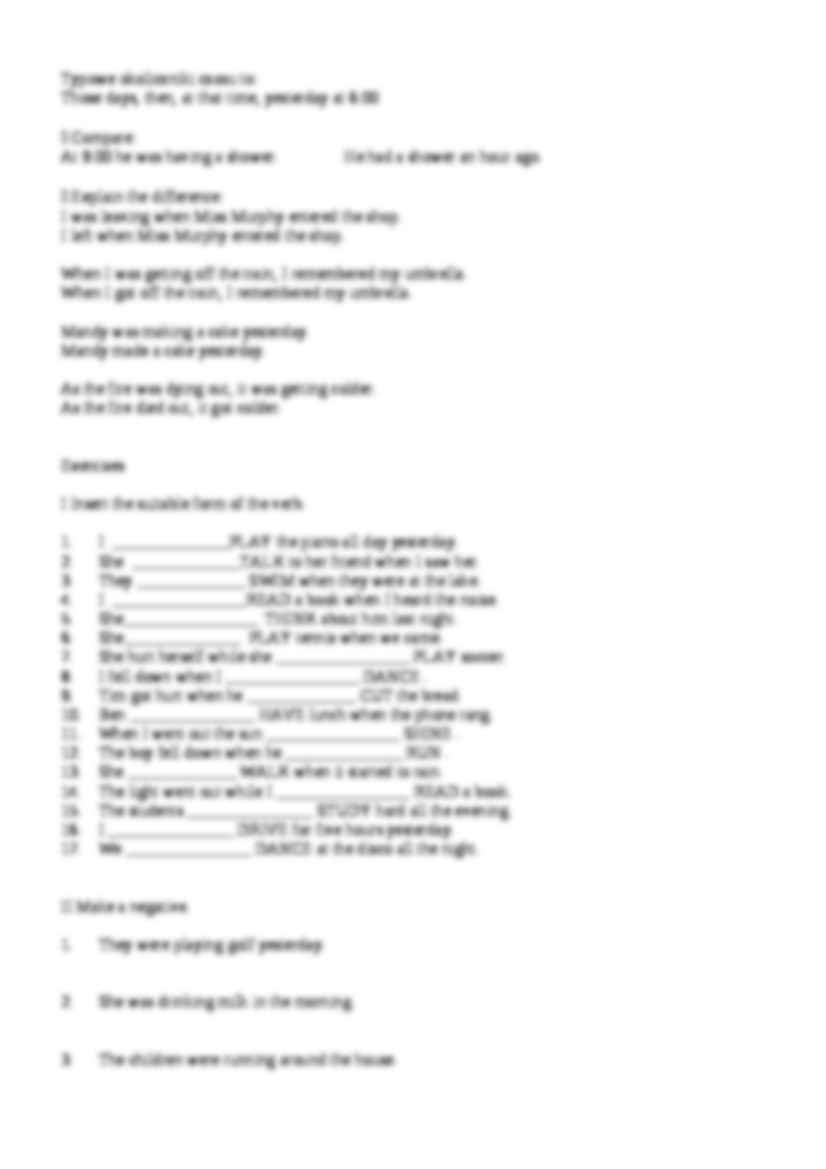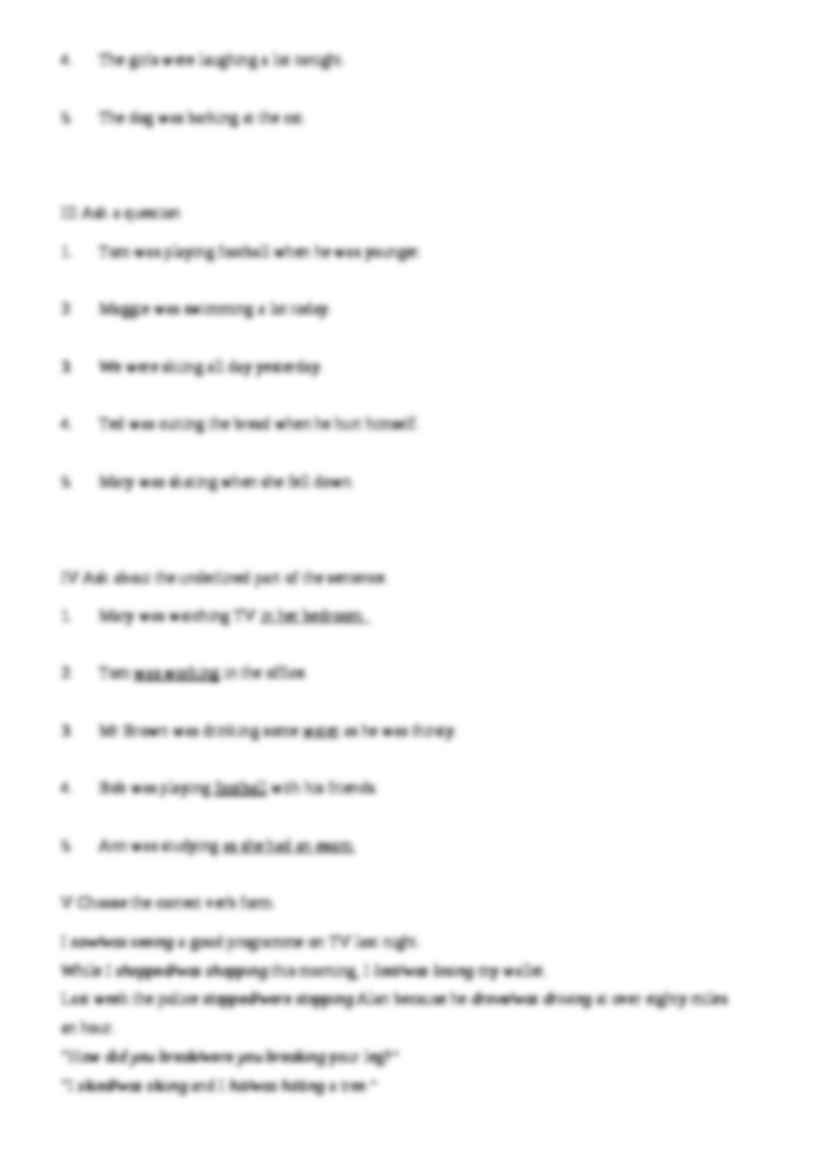To tylko jedna z 4 stron tej notatki. Zaloguj się aby zobaczyć ten dokument.
Zobacz
całą notatkę



Past Continuous http://www.ang.pl/past_continuous.html Past Continuous jest czasem bardzo podobnym do Present Continuous z tym, że wyraża czynność trwającą określony czas w przeszłości. Różnica tkwi w wyrazie być to be - zamiast formy teraźniejszej używamy formy czasu przeszłego. Past Continuous jest trybem niedokonanym.
liczba pojedyncza liczba mnoga 1 osoba I was we were
2 osoba you were you were
3 osoba he was
she was
it was they were
Do tego dokładamy czasownik z końcówką -ing i zdanie w Past Continuous gotowe.
Tom was writing the letter all day yesterday. Tom pisał list przez cały wczorajszy dzień.
What were you doing on Friday? Co robiliście w piątek?
Pytanie tworzymy przez inwersję:
Was Tom writing the letter all day yesterday? Czy Tom pisał list przez cały wczorajszy dzień?
Przeczenie? Tutaj wstawiamy nasze nieśmiertelne not, najczęściej w formie wasn't, weren't
was not » wasn't
were not » weren't
Tom wasn't writing the letter all day yesterday. Tom nie pisał listu przez cały wczorajszy dzień.
Czasu Past Continuous używamy do mówienia o wydarzeniach trwających w określonym momencie w przeszłości. One summer morning at 9:00 Josh was picking apples.
Bardzo często do opisu, kiedy dana czynność trwała, używamy drugiego zdania w Past Simple. (Czynność trwająca przerwana jednorazowym wydarzeniem). W takim przypadku bardzo pomocne są słowa:
when kiedy
while podczas gdy
I was watching TV when the telephone rang. Jane was having a shower when suddenly someone knocked at the door.
Możemy także wyrazić dwie czynności, które trwały jednocześnie:
Mark was taking a bath when Sue was lying in bed and waiting for him. They were talking loudly while Mary was trying to listen to the news on the radio. Czynność, która w sposób ciągły wypełniała jakiś okres w przeszłości:
I was learning all Sunday. They were climbing all day to the top. Opis stopniowego rozwoju sytuacji:
It was getting colder.
Typowe okoliczniki czasu to:
Those days, then, at that time, yesterday at 6:00
Compare:
At 9:00 he was having a shower. He had a shower an hour ago.
Explain the difference:
I was leaving when Miss Murphy entered the shop.
I left when Miss Murphy entered the shop.
When I was getting off the train, I remembered my umbrella.
(…)
… the fire died out, it got colder.
Exercises
I Insert the suitable form of the verb. 1. I ______________PLAY the piano all day yesterday.
2. She _____________TALK to her friend when I saw her.
3. They _____________ SWIM when they were at the lake.
4. I ________________READ a book when I heard the noise.
5. She________________ THINK about him last night.
6. She______________ PLAY tennis when we came.
7…
…?”
“I skied/was skiing and I hit/was hitting a tree.”
VI Past Simple or Past Continuous? Provide the correct form of the verb. While Chris ___________ (read) a book, I ______________ (made) a quick phone call.
During the break the two businessmen ____________ (sit), ______________ (drink), and ____________ (read) “The Times”.
Who ___________ (see) the accident?
His parents _____________ (get) to know each…
... zobacz całą notatkę






Komentarze użytkowników (0)